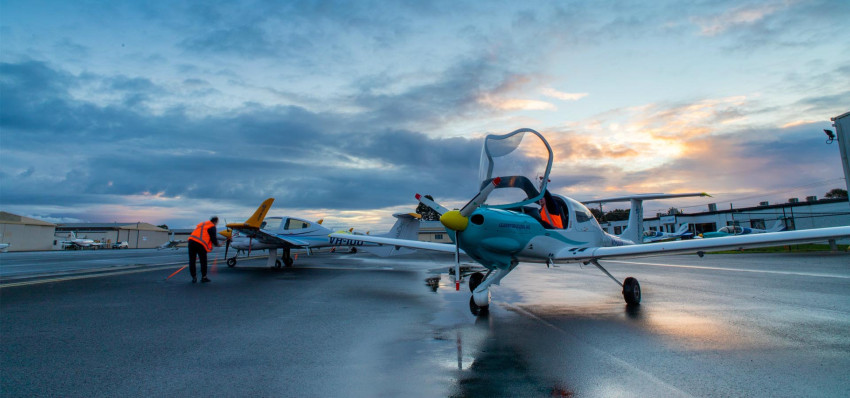
Transitioning from First Officer to Captain demands strategic skill mastery. First Officers closely collaborate with the Captain, handling diverse responsibilities throughout flights. Success hinges on sustained technical proficiency, crew coordination, adept decision-making, and leadership qualities. Career progress relies on accumulating flight hours and varied experiences, with milestones like Senior First Officer. Engaging with cadet programs aligned with standards offers a structured pathway. Becoming a Captain involves challenges, rewards, and heightened responsibilities, requiring continuous professional development for long-term success. Navigating this trajectory demands a proactive and strategic approach, ensuring pilots are well-prepared to command aircraft with confidence.
Understanding the first officer role
First officers work closely with the Captain to ensure safe and efficient aircraft operation. Responsibilities range from monitoring systems to aiding decision-making throughout the flight. Indispensable to flight operations, aspiring First Officers must strategically advance toward assuming the Captain's role. They must perfect navigating, technical skills, effective crew coordination, and leadership qualities. Accumulating diverse flight experiences, meeting hour requirements, and attaining certifications are vital to becoming a Captain. A comprehensive strategy ensures aspiring captains contribute significantly to flight safety and position for the challenges of the elevated role in commercial aviation.
Necessary skills for career advancement
- Technical Proficiency: Beyond the foundational skills acquired during pilot training and the acquisition of a commercial pilot licence, continuous technical proficiency is paramount. Pilots must stay updated on advancements in aviation technology and aircraft systems.
- Crew Coordination: Effective communication and coordination within the cockpit are essential. First Officers should hone their crew resource management skills, fostering a collaborative and efficient working relationship with the Captain and other crew members.
- Decision-Making: As a First Officer, one learns to make decisions swiftly and effectively. Developing strong decision-making skills is crucial for assuming the increased responsibility that comes with the role of a Captain.
- Leadership Qualities: While the First Officer supports the Captain, displaying leadership qualities in various situations is beneficial. This includes confidently taking charge in emergencies or when the Captain is unavailable.
Accumulating experience and flight hours
Career progression in commercial aviation often hinges on accumulating the requisite flight hours and experience. Airlines typically have minimum hour requirements for upgrading to the position of Captain. Pilots should actively seek opportunities to fly different routes and aircraft types, gaining exposure to diverse operating conditions.
Key milestones in the journey to captaincy
When becoming a Captain, pilots encounter key milestones. Some airlines offer a progression to the role of Senior First Officer or Second Officer, serving as an intermediate step. This position entails additional responsibilities and training, effectively preparing pilots for the transition to Captain. Acquiring extra type ratings and certifications enhances a pilot's qualifications, making them more competitive for Captain positions. This may involve specialised training on particular aircraft models or obtaining certifications for flying in specific conditions. Airlines frequently provide leadership training programs, focusing on cultivating advanced leadership, decision-making, and operational skills essential for the Captain's role. These milestones collectively pave the way for a pilot's ascent to the prestigious position of Captain in the aviation hierarchy.
Navigating airline cadet programs for career advancement
Engaging with airline cadet programs can be a strategic move for aspiring pilots. These programs, often offered by major airlines, provide a structured pathway for individuals to obtain their commercial pilot licence and gain entry into the industry. Successful completion of a cadet program can fast-track a pilot's career progression, offering opportunities for rapid advancement to First Officer roles and beyond.
In Australia, where aviation standards are stringent, aspiring pilots can explore reputable airline cadet programs that align with the Civil Aviation Safety Authority (CASA) requirements. These programs provide rigorous training and increase the likelihood of securing positions as First Officers with airlines.
Attaining a commercial pilot licence in Australia is a fundamental requirement for career progression. In Australia, the commercial pilot licence is obtained after completing the necessary flight training hours, passing exams, and meeting the aeronautical experience requirements set by CASA. This licence is a stepping stone for pilots aiming to advance from First Officer to Captain.
Transitioning, challenges and rewards of captaincy
Once a pilot has accumulated the required experience and flight hours, the transition to the position of Captain becomes feasible. Airlines typically have their internal processes for selecting and promoting pilots to Captaincy. Successful candidates undergo additional training and assessments to prepare for the increased responsibilities of commanding an aircraft.
Becoming a Captain comes with both challenges and rewards. Captains are responsible for the overall operation of the flight, making critical decisions, and ensuring the safety of passengers and crew. The role demands a heightened level of leadership, decision-making, and operational skills. However, the sense of accomplishment, increased earning potential, and the prestige associated with being a Captain makes it a highly coveted position.
Continued professional development
Pilots must remain committed to ongoing professional development even after achieving the position of Captain. Staying abreast of industry developments, participating in recurrent training programs, and acquiring additional qualifications contribute to a captain's effectiveness and longevity in the role.
Navigating the trajectory of success
Pilots aspiring for career advancement must cultivate the necessary skills, accumulate diverse experiences, and achieve key milestones. Engaging with airline cadet programs, such as those aligned with CASA standards in Australia, provides a strategic entry point for aspiring pilots.
As the aviation industry continues to evolve, the demand for skilled and experienced Captains remains high. Pilots who strategically plan their career progression, coupled with dedication and ongoing professional development, are well-positioned to ascend to the prestigious role of Captain, leading flights with confidence and expertise.


